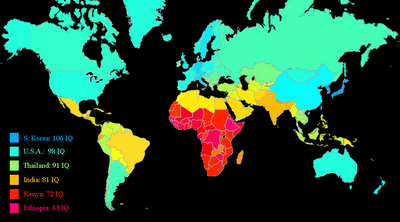Marvin Minsky on the Mind, Neuroscience, and AI

Marvin Minsky has long been one of my heroes. Since reading "Society of Mind", I have respected Minsky's ability to sort through complex ideas and clarify their essence. In this interview with Discover, Minsky discusses a few issues that are close to this blog's raison d'etre.
Although educated in mathematics, Minsky has always thought in terms of mind and machine. For his dissertation at Princeton University in the 1950s, he analyzed a "learning machine," meant to simulate the brain's neural networks, that he had constructed as an undergrad. In his early career he was also an influential inventor, creating the first confocal scanning microscope, a version of which is now standard in labs worldwide. In 1959 Minsky cofounded the Artificial Intelligence Laboratory at MIT, where he designed and built robotic hands that could "feel" and "see" and manipulate objects, a watershed in the field.More at Source.
...His latest book, The Emotion Machine, continues ideas begun in Society of Mind, reflecting twenty-some additional years of thought. It is a blueprint for a thinking machine that Minsky would like to build—an artificial intelligence that can reflect on itself—taking us a step forward into a future that may seem as if out of an Asimov story.
What are your latest ideas about the mind, as set out in The Emotion Machine?
The theme of the book is that humans are uniquely resourceful because they have several ways to do everything. If you think about something, you might think about it in terms of language, or in logical terms, or in terms of diagrams, pictures, or structures. If one method doesn't work, you can quickly switch to another. That's why we're so good at dealing with so many situations. Animals can't imagine what the room would look like if you change that couch from black to red. But a person has ways of constructing mental images or sentences or bits of logic.
...So as you see it, artificial intelligence is the lens through which to look at the mind and unlock the secrets of how it works?
Yes, through the lens of building a simulation. If a theory is very simple, you can use mathematics to predict what it'll do. If it's very complicated, you have to do a simulation. It seems to me that for anything as complicated as the mind or brain, the only way to test a theory is to simulate it and see what it does. One problem is that often researchers won't tell us what a simulation didn't do. Right now the most popular approach in artificial intelligence is making probabilistic models. The researchers say, "Oh, we got our machine to recognize handwritten characters with a reliability of 79 percent." They don't tell us what didn't work.
Neuroscientists like Oliver Sacks and V. S. Ramachandran study people who have brain injuries; to them, what is not happening in the brain is more informative than what is happening. Is that similar to what you're saying?
Yes. In fact, those are just about the two best thinkers in that field. Antonio Damasio is pretty good, but Ramachandran and Sacks are more sophisticated than most. They consider alternative theories instead of trying to prove one particular theory.
...Can artificial intelligence have human-style common sense?
There are several large-scale projects exploring that issue. There's the one that Douglas Lenat in Texas has been pursuing since 1984. He has a couple of million items of commonsense knowledge, such as "People live in houses" or "When it rains, you get wet," which are very carefully classified. But what we don't have are the right kind of answers to questions that a 3-year-old child would be filled with. So we're trying to collect those now. If you ask a childlike question like, "Why, when it rains, would somebody want to stay dry?" it's confusing to a computer, because people don't want to get wet when it rains but they do when they take a shower.
It's interesting that people such as Marvin Minsky and Jeff Hawkins--outsiders to neuroscience--should be producing some of the most seminal ideas for exploring and simulating the underlying processes of mind. But then, that is the way science works, when it works well.
Rather than trying to exclude outsiders--as is too often done in the baby science of climatology--a more mature and wiser science will welcome intelligent inputs from outsiders as potential breaths of fresh air.
Hat tip, KurzweilAI.net.
Labels: artificial intelligence, neuroscience






























